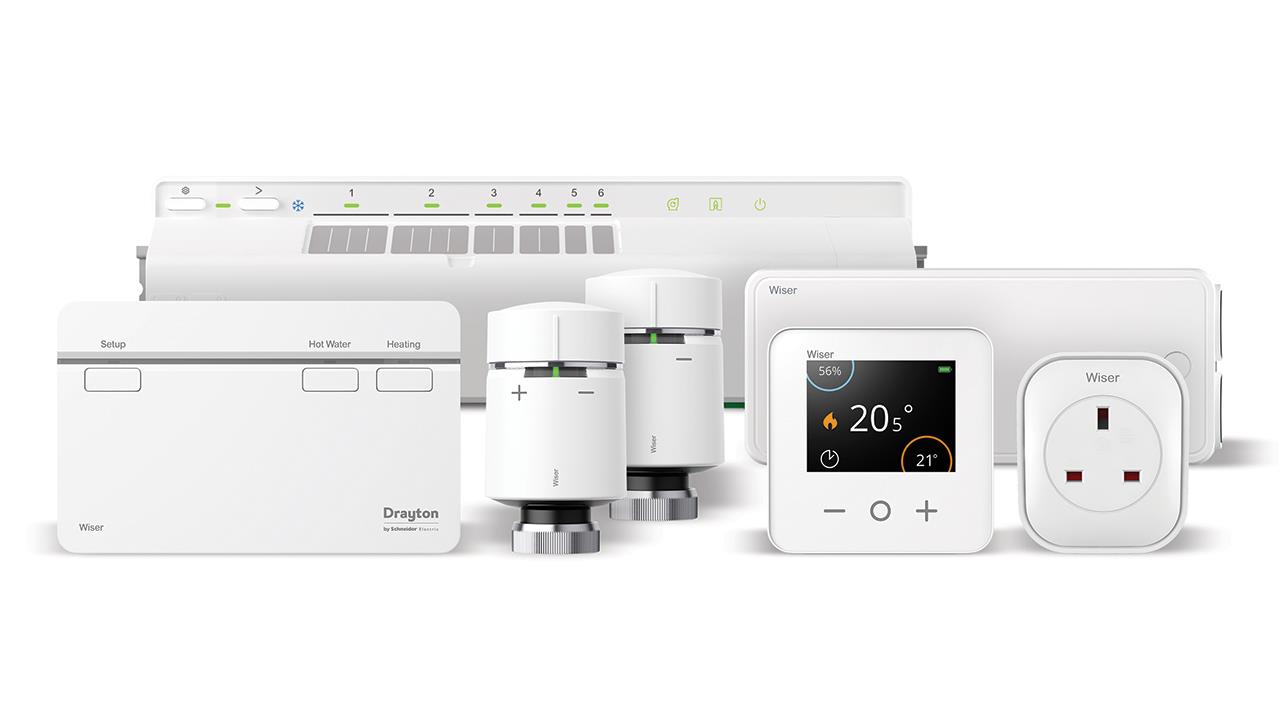

By now, we all know that rising energy costs are putting a strain on the pockets of homeowners across the country; yet recent research carried out by Drayton found that 71% of homeowners think they’re wasting money on energy bills due to not fully understanding their heating.
With that in mind, it’s clear that heating engineers can play a key role in helping to explain the measures that can improve the efficiency and reduce energy use within their homes.
Upgrade their heating controls
According to research from BEAMA, simply upgrading a system from a basic Class I room thermostat to a Class V or Class VI room thermostat with modulation and weather compensation can help reduce energy usage by 12%. As such, Class V or Class VI smart heating controls can go a long way towards enhancing the efficiency of a heating system.
As well as offering the extra convenience of being able to manage your heating from anywhere at any time, many smart controls on the market are also designed with intuitive technology that will help to optimise the performance of a home’s heating.
For example, a control that comes with an Away Mode can act as a quick and easy way to turn the whole heating system off with just the tap of a button, and there are controls with modes that combine optimum stop and weather compensation to learn about the thermal properties of the house. This then allows the smart control to know when to turn off the heating early to save energy, while still delivering the desired room temperature and comfort levels. Typically, by using smart modes, homeowners can reduce their energy usage by an average of 16%, according to 2021 Wiser user data.
Some smart controls also offer insights to users, where they can learn more about how they use their heating and see how much energy they’ve saved by activating smart modes. Drayton’s Wiser also has the capability to connect directly to a smart meter to access further energy data. This type of insight and connectivity can help homeowners save an additional 7% of energy by enabling them to make more informed decisions about how they use their heating.
Lower the flow temperature
Lower flow temperatures have been one of the main talking points so far this year when it comes to reducing energy use, by easing how hard the boiler has to work and the amount of gas needed to achieve the set flow temperature. Lower flow temperatures of 55ºC have also been mandated in the 2022 update to Part L, impacting any new full heating system being installed.
While this is a strong step in helping to make heating systems as efficient as possible, it does consequently place more importance on ensuring a system is correctly balanced.
Lower flow temperatures on an unbalanced system make the issue of radiators not heating up correctly more prevalent than ever, so it’s important that the two go hand-in-hand.
Balance the system
Unbalanced systems can result in radiators not heating up properly, causing some rooms within the home to be cooler than desired, meaning homeowners turn their heating up even higher and use more energy.
This also results in heating systems not being able to work to optimum levels, with condensing boilers failing to enter condensing mode due to incorrect return flow temperatures.
As such, it’s important to ensure that all radiators in the house receive the correct flow of hot water.
To help make this process easier, TRV options are available on the market that feature auto-balancing technology. For example, with the new Drayton Auto-balancing TRV4 and RT414, all installers need to do is identify the heat output from the radiator the TRV will be fitted to, and then set the valve to the correct position using the setting table included with the product. Once set, the system will remain permanently balanced regardless of TRVs in the system opening and closing, which can help homeowners save on average 8.8% on energy costs.
To help further educate homeowners on these key steps they can take, this year Drayton has released the Wiser Complete Guide To Heating handbook.
As well as outlining the benefits of these three key steps, the guide covers other measures that can be taken to improve the overall health of a heating system and make it more efficient. In turn, this then aims to encourage homeowners to speak to their local heating engineer about making these upgrades, leading to additional sales leads for heating installers this winter.
If you'd like to keep up-to-date with the latest developments in the heating and plumbing industry, why not subscribe to our weekly newsletters? Just click the button below and you can ensure all the latest industry news and new product information lands in your inbox every week.